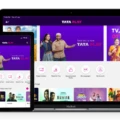Multicast routing is an essential part of any network infrastructure. It is used to efficiently deliver data such as audio/video streaming broadcasts to multiple recipients, saving bandwidth and reducing the amount of traffic on the network. By utilizing multicast routing protocols, you can ensure your data is securely and reliably delivered to all intended recipients.
The two main types of multicast routing protocols are dense mode and sparse mode. Dense mode multicast routes messages over a wide range of networks, while sparse mode uses fewer networks but requires more sophisticated routing techniques. Both types of multicast routing protocols have their own advantages and disadvantages that must be taken into consideration when choosing the best fit for your network.
The dense mode is used when there are many potential recipients within a particular range or area. This type of multicast routing protocol makes use of shorter paths, which reduces the number of hops required for a packet to reach its destination. However, this also increases the amount of bandwidth consumed by each router, since more packets need to be routed through each hop. Additionally, dense mode requires more processing power from routers due to the extra workload associated with handling more data packets.
Sparse mode is best suited for networks containing fewer potential recipients spread across wide areas or continents. Because fewer routers are involved in transmitting data packets, sparse mode consumes less bandwidth than dense mode. Additionally, since only selected routers are used for transmission purposes, the processing power requirements for each router are reduced as well. The downside is that it takes longer for data packets to reach their destination due to longer paths being used during transmission.
When using multicast routing protocols it’s important to remember that certain tasks may not be supported by all devices in your network environment – especially older ones – so make sure you utilize compatible hardware before implementing multicast routes in your system setup! Additionally, security should be a top priority when dealing with sensitive information such as video or audio streams; using a private IP network with secure encryption methods helps ensure that only those who should receive your data can access them efficiently and safely!

Types of Multicast Routing
Multicast routing protocols are used to efficiently send data from one source to multiple destinations across a network. There are two different types of multicast routing protocols: Dense Mode and Sparse Mode.
The dense mode uses flooding techniques to send data out to all destinations in the multicast group. In this method, the router sends the packet out on all ports until the packet reaches its destination. This is considered an “all-or-nothing” approach, as all destinations either receive the data or none do. This type of multicast routing is often used for applications such as streaming video where it is important that all users receive the same content at the same time.
Sparse mode utilizes a more efficient approach as it only sends data downlinks that have active members in them. A router will build a tree structure of links that contain only active members and send packets down these links only, allowing for more efficient use of network resources. This type of multicast routing is often used for applications such as software distribution where not all users need to receive the same content at the same time.
The Benefits of Enabling Multicast Routing
Yes, you should enable multicast routing. Multicast routing is a secure and reliable way of delivering video content over a private IP network. It offers better speeds, scalability, and privacy than using a third-party unicast OTT streaming application to deliver the same content over the internet. With multicast, only those with access to the secure private IP network will be able to view your videos. It also eliminates the need for costly bandwidth usage from public networks. Finally, it eliminates any concerns about content security since the video data is not exposed to the public internet.
Uses of Multicast
Multicast is used for distributed data transmission, where a single source sends a single copy of data to multiple recipients. It is commonly used for applications such as audio/video streaming broadcasts, online gaming, software updates, and IPTV (Internet Protocol Television). Multicast is an efficient way to deliver large amounts of data to multiple recipients simultaneously since only one copy of the data needs to be sent from the source. Additionally, multicast can be used for live events where viewers can watch the event in real-time without using up large amounts of bandwidth.
Understanding Multicast Routing
Multicast routing is a method of forwarding network data from one source to a group of recipients that are located in different locations on the same network. It works by sending a single packet or stream of data to multiple recipients at the same time, which helps reduce bandwidth usage and improve performance.
Multicast routing is used for many applications including video conferencing, streaming media content, and gaming. Unlike broadcast traffic, which sends packets to all hosts on the network regardless of whether they want it or not, multicast traffic only sends packets to hosts that have explicitly requested them. This makes it much more efficient and allows for better scalability when sending large amounts of data to multiple recipients.
Examples of Multicasting
Examples of multicasting include:
1. Live streaming video/audio: Multicasting is used to send a single stream of audio/video data to multiple receivers. This is especially useful for streaming events such as sports matches and concerts to viewers around the world.
2. IPTV and digital video broadcasting (DVB): IPTV and DVB are digital television technologies that use multicast protocols to broadcast television programs and other content to multiple users at the same time.
3. Online gaming: Popular online games such as World of Warcraft, League of Legends, and Counter-Strike use multicasting technology to send real-time game updates and data to players in different locations.
4. Network printing: Printer manufacturers use multicasting to allow users on a networked system to access multiple printers with a single command.
5. File sharing: Peer-to-peer applications such as BitTorrent use multicast protocols to allow users on the same network or Internet connection to share large files between them without having to upload the entire file from one user’s computer onto another’s every time it is requested.
When Is the Best Time to Use Multicast?
Multicast should be used when you need to send a single data stream to multiple receivers at the same time. This is different from broadcast, which sends the same data to all receivers on the network, regardless of whether they are interested in the data or not. Multicast allows you to send data only to the nodes that have expressed an interest in it, thereby reducing unnecessary traffic on the network.
Common applications for multicast include streaming media (such as audio/video files), gaming networks, and IPTV services. It can also be used for large-scale system administration tasks such as distributing software updates and patches to a large number of systems simultaneously.
Can Multicast Work Over WiFi?
The short answer is yes, multicast does work over WiFi. However, it is important to note that the implementation of multicast over WiFi can be complicated due to some technical limitations. Multicast traffic is sent at a mandatory data rate and is broadcasted to all devices within range, which can cause network congestion. Additionally, the network topology and other factors such as packet size and fragmentation can also affect how well multicast works over WiFi. To ensure the successful implementation of multicast over WiFi, it is important to consider these factors and design the network accordingly.
Does WiFi Utilize Multicast?
Yes, WiFi does use multicast. Multicast is a type of broadcast traffic sent from an Access Point (AP) at a specific data rate. It allows multiple receivers to receive the same transmission simultaneously, as opposed to unicast, which sends data directly to individual devices. In wireless networks, multicast is mainly used for broadcast traffic such as streaming media or large file transfers. With multicast, the AP sends out a single packet that all receivers can access at once, reducing the amount of airtime needed and helping improve network performance.
Benefits of Multicasting
The primary benefit of multicasting is its ability to efficiently distribute data and multimedia content from a single source to multiple destinations. This provides numerous advantages, including:
1. Improved Efficiency: Multicasting reduces the processing load of the source server and other network devices, as it only sends out a single stream of data to multiple recipients.
2. Optimal Performance: By limiting data redundancy, multicasting can help ensure higher performance levels by reducing unnecessary traffic across the network.
3. Distributed Applications: Multicasting enables point-to-multipoint applications with minimal network resources. This makes it ideal for large-scale deployments, such as video streaming or software updates.
4. Cost Savings: With multicasting, organizations can save on bandwidth costs as they don’t need to send multiple streams of data over the same link or switch port, which eliminates the need for additional connections or infrastructure upgrades.
Benefits of Multicast Routing
The main benefit of multicast routing is scalability. Multicast routing allows a single packet to be sent from a source to multiple receivers, instead of sending multiple copies of the same packet. This reduces the amount of bandwidth needed on the network, which can make it more efficient for large-scale applications such as video streaming or online gaming. Additionally, multicast routing can reduce latency for end users by reducing the need for retransmission requests. Finally, multicast routing helps to conserve network resources because only one packet needs to be sent instead of many identical packets.
Conclusion
In conclusion, multicast routing is a powerful and efficient way to distribute data to multiple recipients. It is more secure than using a third-party unicast OTT streaming application and allows for a single copy of data to be sent to a single multicast address. There are two types of multicast routing protocols: Dense Mode and Sparse Mode, each of which have its own advantages and disadvantages. With the use of multicast IP Routing protocols, organizations can provide audio/video streaming broadcasts to their customers with ease and security.








